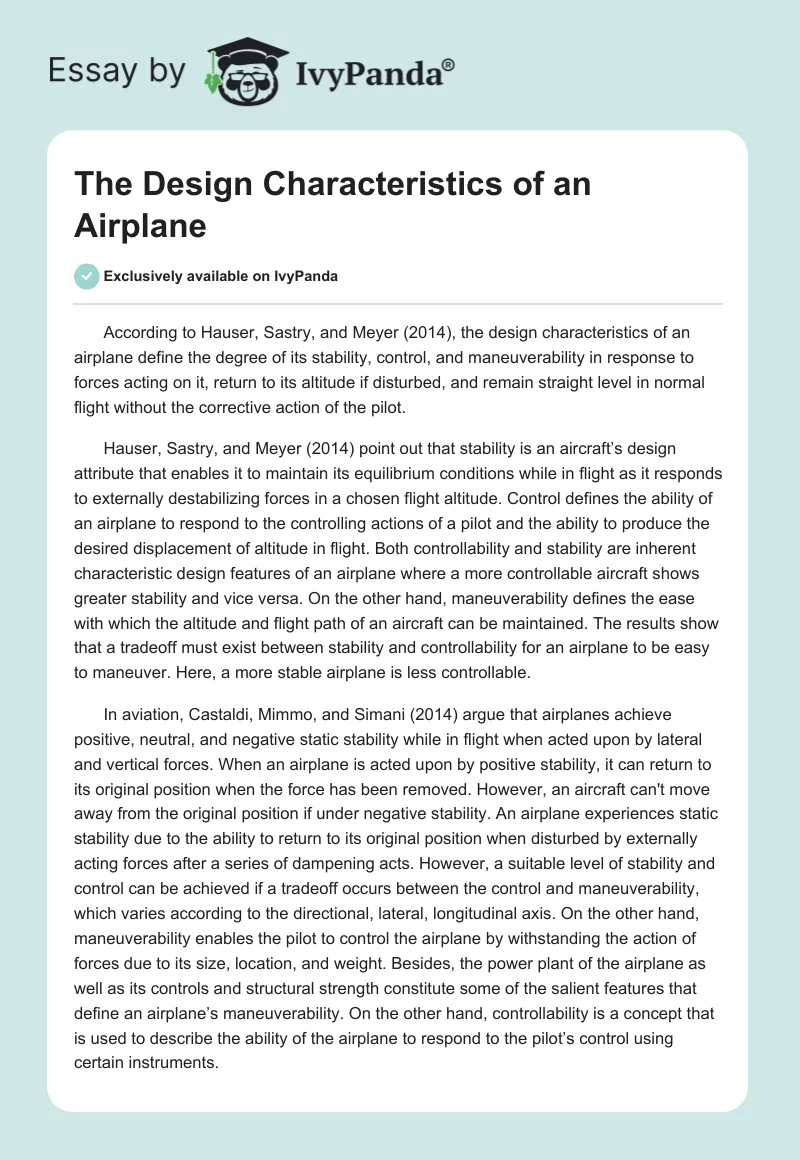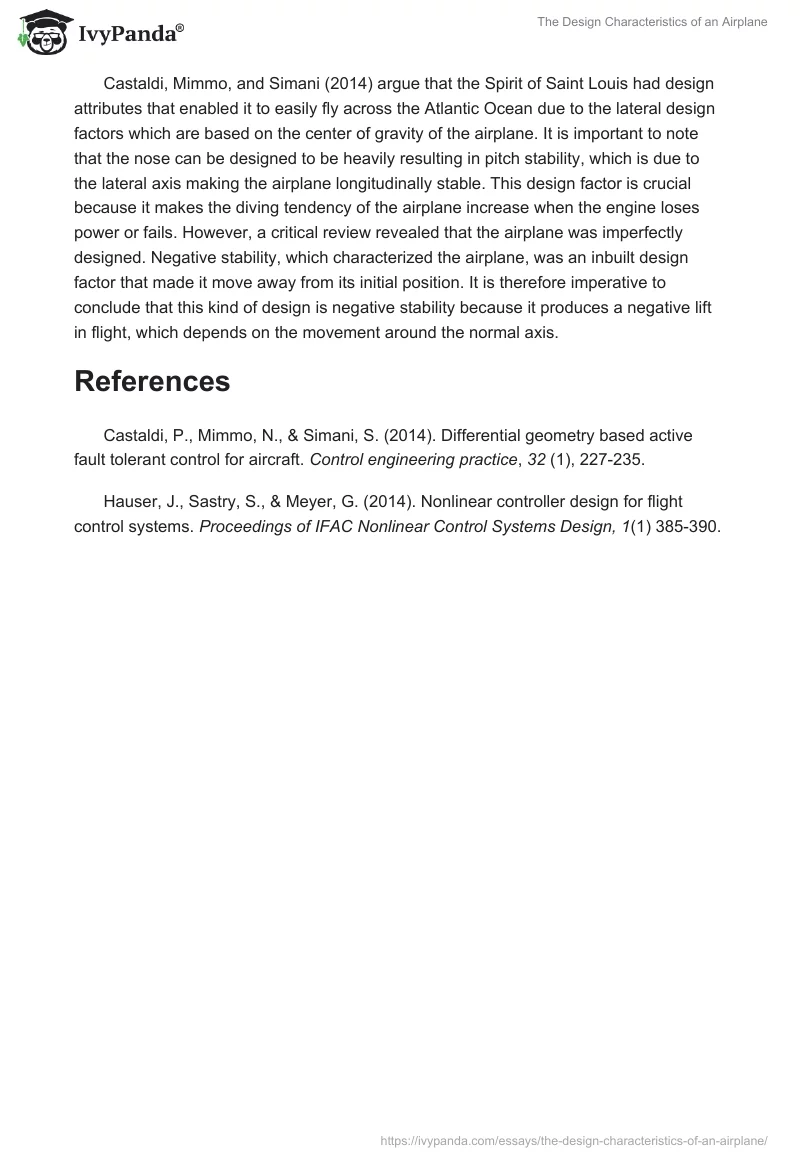According to Hauser, Sastry, and Meyer (2014), the design characteristics of an airplane define the degree of its stability, control, and maneuverability in response to forces acting on it, return to its altitude if disturbed, and remain straight level in normal flight without the corrective action of the pilot.
Hauser, Sastry, and Meyer (2014) point out that stability is an aircraft’s design attribute that enables it to maintain its equilibrium conditions while in flight as it responds to externally destabilizing forces in a chosen flight altitude. Control defines the ability of an airplane to respond to the controlling actions of a pilot and the ability to produce the desired displacement of altitude in flight. Both controllability and stability are inherent characteristic design features of an airplane where a more controllable aircraft shows greater stability and vice versa. On the other hand, maneuverability defines the ease with which the altitude and flight path of an aircraft can be maintained. The results show that a tradeoff must exist between stability and controllability for an airplane to be easy to maneuver. Here, a more stable airplane is less controllable.
In aviation, Castaldi, Mimmo, and Simani (2014) argue that airplanes achieve positive, neutral, and negative static stability while in flight when acted upon by lateral and vertical forces. When an airplane is acted upon by positive stability, it can return to its original position when the force has been removed. However, an aircraft can’t move away from the original position if under negative stability. An airplane experiences static stability due to the ability to return to its original position when disturbed by externally acting forces after a series of dampening acts. However, a suitable level of stability and control can be achieved if a tradeoff occurs between the control and maneuverability, which varies according to the directional, lateral, longitudinal axis. On the other hand, maneuverability enables the pilot to control the airplane by withstanding the action of forces due to its size, location, and weight. Besides, the power plant of the airplane as well as its controls and structural strength constitute some of the salient features that define an airplane’s maneuverability. On the other hand, controllability is a concept that is used to describe the ability of the airplane to respond to the pilot’s control using certain instruments.
Castaldi, Mimmo, and Simani (2014) argue that the Spirit of Saint Louis had design attributes that enabled it to easily fly across the Atlantic Ocean due to the lateral design factors which are based on the center of gravity of the airplane. It is important to note that the nose can be designed to be heavily resulting in pitch stability, which is due to the lateral axis making the airplane longitudinally stable. This design factor is crucial because it makes the diving tendency of the airplane increase when the engine loses power or fails. However, a critical review revealed that the airplane was imperfectly designed. Negative stability, which characterized the airplane, was an inbuilt design factor that made it move away from its initial position. It is therefore imperative to conclude that this kind of design is negative stability because it produces a negative lift in flight, which depends on the movement around the normal axis.
References
Castaldi, P., Mimmo, N., & Simani, S. (2014). Differential geometry based active fault tolerant control for aircraft. Control engineering practice, 32 (1), 227-235.
Hauser, J., Sastry, S., & Meyer, G. (2014). Nonlinear controller design for flight control systems. Proceedings of IFAC Nonlinear Control Systems Design, 1(1) 385-390.


